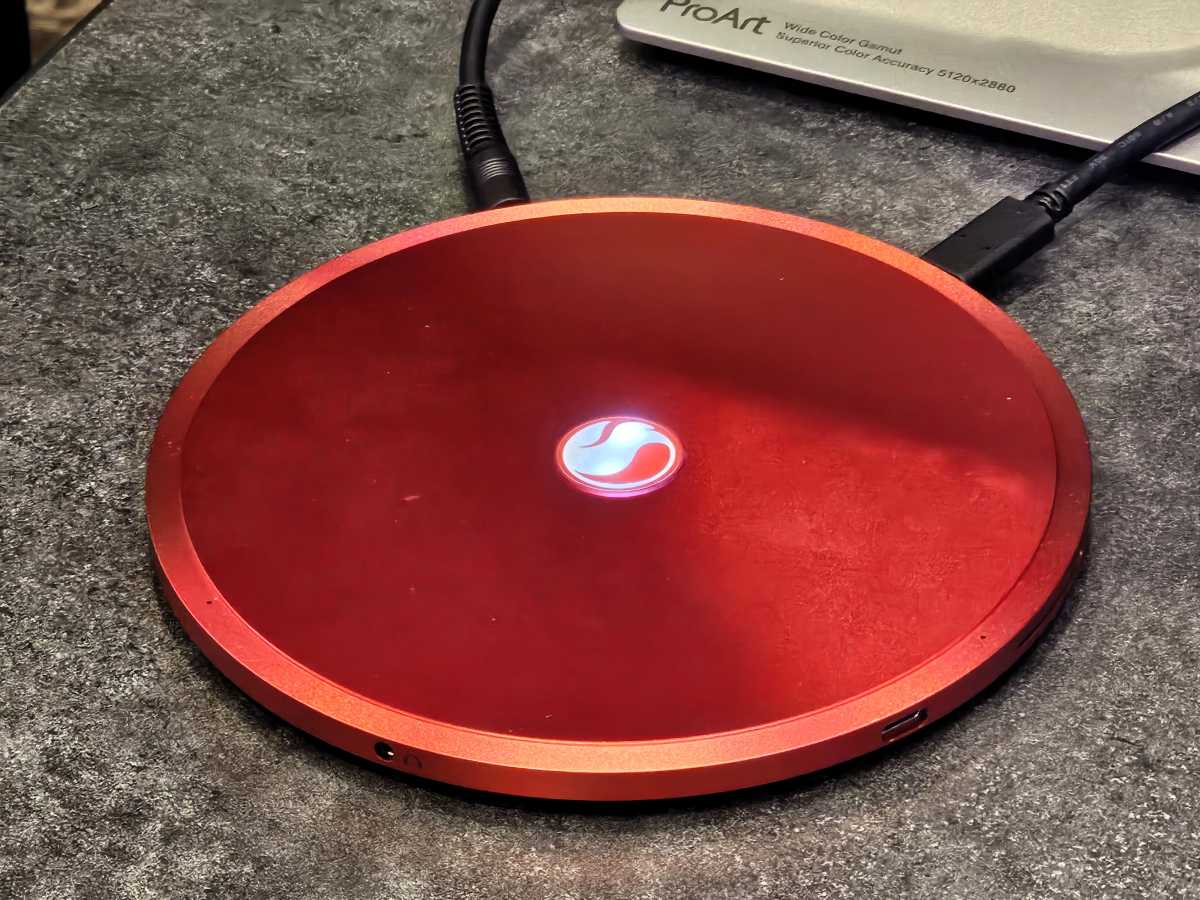- Регистрация
- 17 Февраль 2018
- Сообщения
- 38 906
- Лучшие ответы
- 0
- Реакции
- 0
- Баллы
- 2 093
Offline
It's only a pair of reference designs, but that's still good news for AirJet.

Image: Mark Hachman / Foundry
Two Qualcomm reference designs, showcasing the new Snapdragon X2 Elite chips, use an AirJet cooling system from Frore Systems, representatives confirmed.
Qualcomm launched its second-generation Snapdragon X2 Elite and Elite Extreme chips at the Snapdragon Technology Summit in Maui. At press time, the company had not announced any partners for the two product families, though Qualcomm showed off two reference designs in a demonstration showcase.
Inside the two reference designs were the Qualcomm Snapdragon X2 Extreme chips, the company’s fastest PC processors yet. The X2 Elite Extreme includes a total of 18 cores, which can sustain 4.4GHz and boost up to 5GHz under load.

One of the reference systems housing a Snapdragon X2 Elite Extreme chip from Qualcomm and a Frore AirJet to cool it.
Mark Hachman / Foundry
The reference designs did not include a system fan, but did use the Frore AirJet, a Qualcomm representative confirmed. It wasn’t clear which AirJet cooling chip was used, including options such as the AirJet Mini Slim.
Additionally, the Qualcomm reference designs just look cool, including a “frisbee” design and a thin mini PC that slots in under a desktop display.
Though the AirJet galvanized the industry when it was first debuted in late 2022, the company hasn’t announced any major PC design wins. It’s unclear whether Qualcomm’s reference design mandates the use of an AirJet or simply suggests it, and whether any PC maker would adopt it. Nevertheless, it’s a juicy piece of positive news for AirJet, however it turns out.
Disclosure: Qualcomm paid for my room, board, and travel expenses, but did not ask for or exert any editorial control over this story or other PCWorld content.
Author: Mark Hachman, Senior Editor, PCWorld

Mark has written for PCWorld for the last decade, with 30 years of experience covering technology. He has authored over 3,500 articles for PCWorld alone, covering PC microprocessors, peripherals, and Microsoft Windows, among other topics. Mark has written for publications including PC Magazine, Byte, eWEEK, Popular Science and Electronic Buyers' News, where he shared a Jesse H. Neal Award for breaking news. He recently handed over a collection of several dozen Thunderbolt docks and USB-C hubs because his office simply has no more room.
Recent stories by Mark Hachman:

Image: Mark Hachman / Foundry
Two Qualcomm reference designs, showcasing the new Snapdragon X2 Elite chips, use an AirJet cooling system from Frore Systems, representatives confirmed.
Qualcomm launched its second-generation Snapdragon X2 Elite and Elite Extreme chips at the Snapdragon Technology Summit in Maui. At press time, the company had not announced any partners for the two product families, though Qualcomm showed off two reference designs in a demonstration showcase.
Inside the two reference designs were the Qualcomm Snapdragon X2 Extreme chips, the company’s fastest PC processors yet. The X2 Elite Extreme includes a total of 18 cores, which can sustain 4.4GHz and boost up to 5GHz under load.

One of the reference systems housing a Snapdragon X2 Elite Extreme chip from Qualcomm and a Frore AirJet to cool it.
Mark Hachman / Foundry
The reference designs did not include a system fan, but did use the Frore AirJet, a Qualcomm representative confirmed. It wasn’t clear which AirJet cooling chip was used, including options such as the AirJet Mini Slim.
Additionally, the Qualcomm reference designs just look cool, including a “frisbee” design and a thin mini PC that slots in under a desktop display.
Though the AirJet galvanized the industry when it was first debuted in late 2022, the company hasn’t announced any major PC design wins. It’s unclear whether Qualcomm’s reference design mandates the use of an AirJet or simply suggests it, and whether any PC maker would adopt it. Nevertheless, it’s a juicy piece of positive news for AirJet, however it turns out.
Disclosure: Qualcomm paid for my room, board, and travel expenses, but did not ask for or exert any editorial control over this story or other PCWorld content.
Author: Mark Hachman, Senior Editor, PCWorld

Mark has written for PCWorld for the last decade, with 30 years of experience covering technology. He has authored over 3,500 articles for PCWorld alone, covering PC microprocessors, peripherals, and Microsoft Windows, among other topics. Mark has written for publications including PC Magazine, Byte, eWEEK, Popular Science and Electronic Buyers' News, where he shared a Jesse H. Neal Award for breaking news. He recently handed over a collection of several dozen Thunderbolt docks and USB-C hubs because his office simply has no more room.
Recent stories by Mark Hachman:
